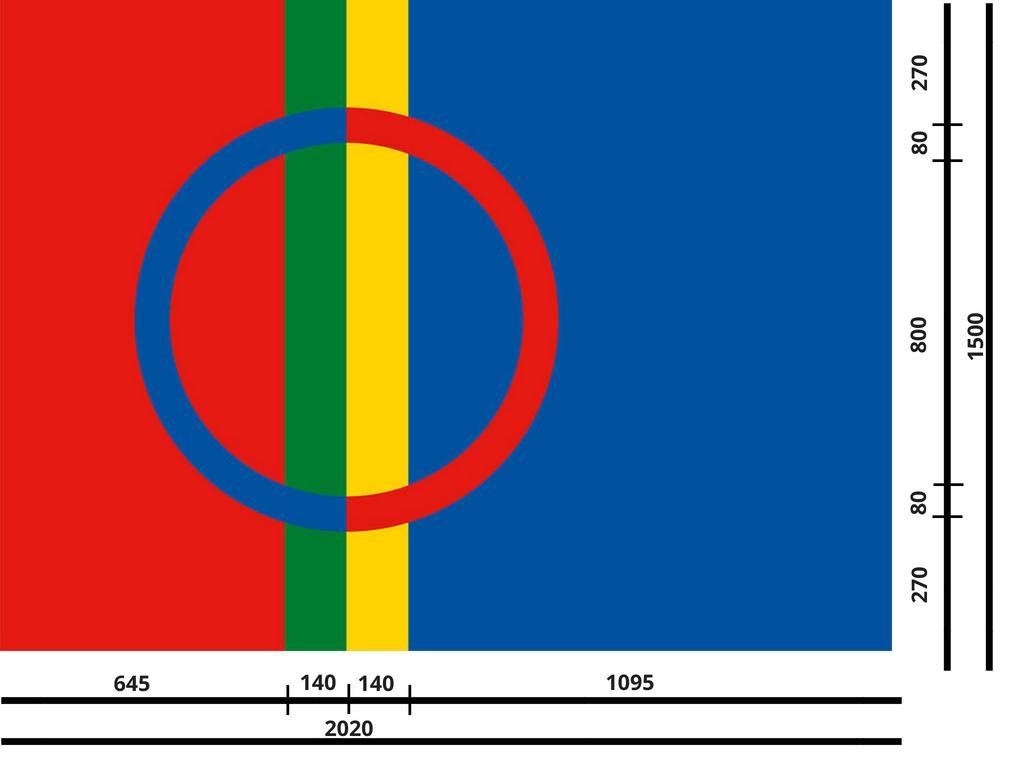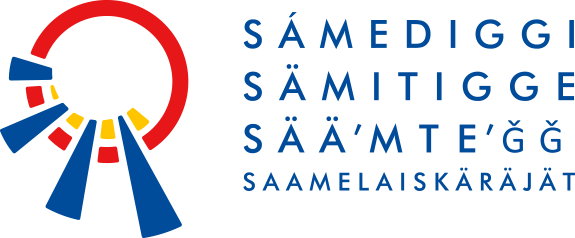About us
The Sámi are the only Indigenous people in the European Union. The status of the Sámi as an Indigenous people is enshrined in the Constitution of Finland. About 6 percent of the world’s population, or 476 million in total, belong to Indigenous peoples. Indigenous peoples live in areas across 90 countries.
The Sámi Parliament is the official representative of the Sámi people. It establishes the official position of the Sámi and negotiates with government authorities. The Sámi Parliament upholds and promotes all three living Sámi languages in Finland, all the traditional livelihoods practiced by the Sámi, Sámi culture, and the Sámi way of life.
The Sámi Parliament
Working at the Sámi Parliament
Sámi Cultural Centre Sajos
Frequently asked questions
-
How many Sámi live in Finland?
About 10,000 Sámi live in Finland. The Sámi homeland in Finland consists of the municipalities of Enontekiö, Inari and Utsjoki, in addition to the northern part of the municipality of Sodankylä, i.e. the Lapland reindeer herding district. However, over 60 percent of Sámi in Finland live outside of the Sámi homeland.
There are approximately 75,000–100,000 Sámi in total, depending on the method of calculation. Sámi have inhabited the northern parts of Norway, Sweden, and Finland, as well as the interior of the Kola Peninsula, since well before the establishment of today’s national borders. This region is called Sápmi in the Northern Sámi language, Säämi in Inari Sámi, and Sääʹmm in Skolt Sámi.
-
What are the traditional livelihoods of the Sámi?
Traditional Sámi livelihoods include fishing, reindeer herding, hunting, gathering, and Sámi handicrafts, as well as the modern adaptations of these practices. Small-scale tourism activities may be practised alongside traditional livelihoods as a source of supplemental income. In traditional livelihoods, the Sámi language forms a natural part of one’s work. Livelihoods serve as arenas for active use of language and culture, through which knowledge and skills are also transferred seamlessly from generation to generation.
-
Which of the Sámi languages are spoken in Finland?
Sámi languages are Indigenous languages. The area where Sámi languages are traditionally spoken extends from the Dalarna region in Central Sweden to the easternmost point of the Kola Peninsula in Russia. Sámi languages belong to the Finno-Ugric branch of the Uralic language family. The languages most closely related to the Sámi languages are Finnic languages, such as Finnish and Estonian. Due to migration, Sámi languages are now spoken not only in their ancestral homelands but also elsewhere, e.g. in the capital regions of Finland, Sweden, and Norway.
In Finland, three Sámi languages are spoken: Northern Sámi, Inari Sámi, and Skolt Sámi. All Sámi languages spoken in Finland are endangered languages.
Northern Sámi is the most widely spoken of the Sámi languages, both in terms of geographical area and number of speakers. It is estimated to be spoken by about 20,000–25,000 people in total across Finland, Norway, and Sweden. The number of Northern Sámi speakers in Finland is estimated to be approximately 2,000.
Inari Sámi is traditionally spoken in the area surrounding Lake Inari. The number of Inari Sámi speakers is estimated to be approximately 400. The number of speakers is rising steadily thanks to sustained language revitalisation efforts. Inari Sámi is the only Sámi language spoken exclusively in Finland.
Skolt Sámi was traditionally spoken on the Kola Peninsula in Russia, and in adjacent regions in Finland and Norway. Today, most speakers of Skolt Sámi live in Finland, in the municipality of Inari. The number of Skolt Sámi speakers in Finland is estimated to be approximately 300.
Sámi languages are Indigenous languages. The area where Sámi languages are traditionally spoken extends from the Dalarna region in Central Sweden to the easternmost point of the Kola Peninsula in Russia. Sámi languages belong to the Finno-Ugric branch of the Uralic language family. The languages most closely related to the Sámi languages are Finnic languages, such as Finnish and Estonian. Due to migration, Sámi languages are now spoken not only in their ancestral homelands but also elsewhere, e.g. in the capital regions of Finland, Sweden, and Norway.
-
How many Sámi languages exist?
There are nine Sámi languages spoken today: Ter Sámi (Russia), Kildin Sámi (Russia), Skolt Sámi (Finland, Russia, Norway), Inari Sámi (Finland), Northern Sámi (Finland, Sweden, Norway), Lule Sámi (Sweden, Norway), Pite Sámi (Sweden, Norway), Ume Sámi (Sweden, Norway), and Southern Sámi (Sweden, Norway). Akkala Sámi, historically spoken in Russia, is regarded as extinct as of 2003.
-
What is the traditional Sámi dress?
Of all Sámi national symbols, the Sámi traditional dress is the most prominent. It has become an important symbol of identity which bears with it the history of the Sámi. A Sámi dress often conveys messages about its wearer in many different ways. The full dress consists of many smaller components, e.g. shoes, belt, hat, shawl, and jewellery.
Five main types of Sámi dresses are used in Finland: the Enontekiö, Inari, Utsjoki, Vuotso, and Skolt Sámi dresses. The Sámi dress originated as a folk dress and has not fallen out of use at any point in history. Over time, the dress has changed from an everyday garment to one used more often for special occasions.
-
Do the Sámi have a national anthem?
Sámi soga lávlla is the official Sámi national anthem. The words to Sámi soga lávlla were written by Isak Saba, the first Sámi member of the Parliament of Norway. The composition is by Norwegian composer Arne Sørlie. Saba’s poem was chosen as the national anthem at the 13th Sámi Conference in Åre, Sweden, in August 1986. The composition was officially approved at the 15th Sámi Conference in Helsinki in 1992.
-
Do the Sámi have a national yoik?
Sámi eatnan duoddariid by Nils-Aslak Valkeapää , also known as Áillohaš , was selected by the 22nd Sámi Conference as the Sámi national yoik.
The melody and lyrics to the yoik were composed by the late artist Nils-Aslak Valkeapää. The yoik is originally in Northern Sámi, but it has been translated to the Southern Sámi, Lule Sámi, Inari Sámi, Skolt Sámi, and Kildin Sámi languages.
-
What does the Sámi flag symbolise?
The Sámi flag was designed by Sámi artist Astrid Båhl. The subject of the flag is from the poem Páiven párneh (Sons of the Sun), written by the Southern Sámi Anders Fjellner. In this poem, Fjellner depicts the Sámi as daughters and sons of the Sun. The red circle in the flag depicts the Sun, and the blue circle depicts the Moon. Yellow and green add to the flag’s vivid colours — these are the same colours traditionally used in Sámi traditional dresses.
The flag was approved as the official symbol of the Sámi on the 15th of August 1986 at the 13th Sámi Conference in Åre, Sweden, where the anthem Sámi soga lávlla was also approved. There are twelve Sámi flag days, the most important being the Sámi National Day on the 6th of February. It commemorates the first cross-border Sámi congress in Trondheim, Norway.
On Sámi flag days, the Finnish Ministry of the Interior recommends flying the Sámi flag customarily. Flags are flown according to the laws of each country. Private individuals, organisations, and businesses are also free to fly the Sámi flag as a demonstration of festivity, respect, or mourning.

RED GREEN YELLOW BLUE Pantone 485 C Pantone 356 C Pantone 116 Pantone 286 C Source: www.saamicouncil.net
-
When are the Sámi flag days?
In total, twelve Sámi flag days have been approved at the Sámi conferences in Helsinki in 1992, Murmansk in 1996, and Trondheim in 2017.
6 February: Sámi National Day
2 March: Establishment of the Sámi Parliament of Finland in 1996
Lady Day (Feast of the Annunciation): Traditional Sámi holiday
Midsummer Day: General public holiday
9 August: UN International Day of the World’s Indigenous Peoples
15 August: Approval of the Sámi flag in 1986
18 August: Establishment of the Sámi Council in 1956
26 August: Establishment of the Sámi Parliament of Sweden in 1993
9 October: Establishment of the Sámi Parliament of Norway in 1989
9 November: Establishment of the Sámi Delegation in 1973. The Sámi Delegation was the predecessor to the Sámi Parliament of Finland.
15 November: Birthday of Isak Saba, the first Sámi member of Parliament. Isak Saba was born on the 15th of November 1875 in Nesseby, on the Varanger Peninsula of Norway. He served two terms (1906–1912) in the Parliament of Norway. Isak Saba represented the Labour Party.
29 November: Birthday of Elsa Laula Renberg. Elsa Laula Renberg, born in 1877, is considered to be the catalyst of Sámi cross-border cooperation. She was active in a Sámi women’s organisation and was influential in facilitating the first Sámi congress, which was organised in Trondheim, Norway on the 6th of February 1917.
-
What are the responsibilities of the Sámi Parliament?
The foremost responsibility of the Sámi Parliament is to carry out its constitutionally guaranteed self-governance on language and cultural affairs, and to guarantee the preservation and advancement of Sámi Indigenous culture.
The Sámi Parliament states the official position of the Sámi and represents the Sámi in domestic and international affairs within its scope of responsibilities. The Sámi Parliament enjoys autonomous power of decision. The Sámi Parliament may introduce proposals and initiatives and provide statements to government authorities. The Sámi Parliament also appoints representatives to various working groups. Consultations and negotiations with government officials constitute another main field of activity.



